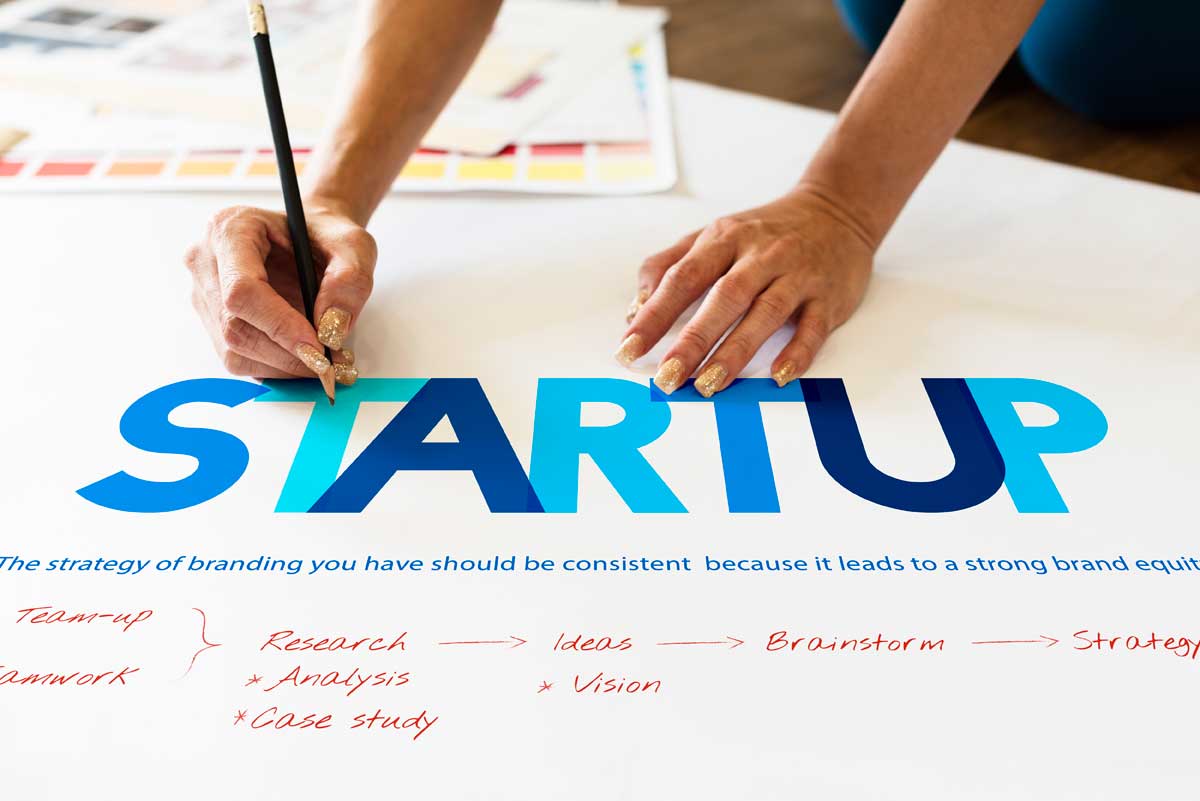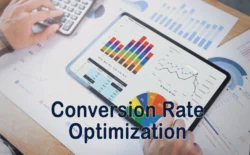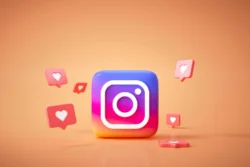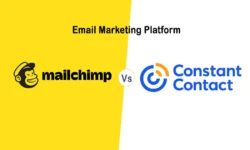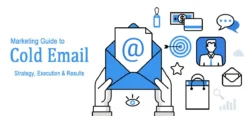Your brand isn’t just your logo. It’s how people feel when they hear your company name. It’s what they tell their friends about you. It’s the reason they choose you over your competitors.
Think about it: Would you rather buy from “Generic Phone Company” or Apple? Would you trust “Random Coffee Shop” or Starbucks? That’s the power of branding.
For startups, a strong brand can be your biggest advantage. It helps you compete with bigger companies, charge higher prices, and turn customers into fans who spread the word for free.
Table of Contents
- Step 1: Know Why You Exist (Your Brand Purpose)
- Step 2: Know Your Customers Inside Out
- Step 3: Study Your Competition
- Step 4: Define Your Brand Personality
- Step 5: Create Your Visual Identity
- Step 6: Find Your Brand Voice
- Step 7: Build Your Online Presence
- Step 8: Create Valuable Content
- Step 9: Deliver Consistent Customer Experience
- Step 10: Build Your Community
- Step 11: Measure What Matters
- Step 12: Stay Consistent and Evolve
- Common Startup Branding Mistakes to Avoid
- Free and Low-Cost Branding Tools
- Your 30-Day Brand Building Action Plan
- Conclusion
Step 1: Know Why You Exist (Your Brand Purpose)
Before you design anything, answer this question: “Why does our company exist beyond making money?”
Simple Framework:
- What problem do you solve?
- How does this make people’s lives better?
- Why do you personally care about this?
Good Examples:
- Tesla: “Speed up the world’s move to clean energy”
- Airbnb: “Help people belong anywhere”
- Warby Parker: “Make glasses affordable for everyone”
Your Turn: Write one sentence that explains why your startup matters. Keep it simple and honest.
Step 2: Know Your Customers Inside Out
You can’t build a brand for everyone. Pick your ideal customer and get to know them deeply.
Customer Research Checklist:
Basic Info:
- Age, income, location
- Job and education
- How they spend free time
Deeper Insights:
- What keeps them awake at night?
- What are their biggest goals?
- Where do they get information?
- How do they make buying decisions?
Quick Research Methods:
- Survey your existing customers (even if you only have 10)
- Check your competitors’ social media followers
- Join Facebook groups where your customers hang out
- Ask friends who fit your target customer profile
Create a Simple Customer Profile: “Sarah is a 35-year-old working mom who values convenience and quality. She shops online during lunch breaks and trusts recommendations from other parents.”
Step 3: Study Your Competition
Look at 5-10 companies that serve your customers. What do they all do the same? That’s your opportunity to be different.
Competition Analysis:
- What colors do they all use?
- How do they talk to customers (formal vs. casual)?
- What do they promise customers?
- What do customer reviews complain about?
- Where do you never see them?
Find Your Gap: Maybe everyone in your industry is serious and corporate. You could be friendly and fun. Maybe everyone is expensive. You could be affordable. Maybe everyone is complicated. You could be simple.
Step 4: Define Your Brand Personality
If your brand was a person, what would they be like? This helps you make consistent decisions about everything from your logo to your customer service.
Pick Your Brand Personality:
The Expert: Smart, reliable, professional
- Good for: B2B companies, consultants, financial services
- Sounds like: “Our data shows…” “We recommend…” “Best practices include…”
The Friend: Helpful, caring, down-to-earth
- Good for: Consumer brands, local businesses, health/wellness
- Sounds like: “We’re here to help…” “You’ve got this…” “Let’s figure this out together…”
The Innovator: Cutting-edge, bold, forward-thinking
- Good for: Tech startups, creative agencies, disruptive products
- Sounds like: “The future is…” “Imagine if…” “We’re changing the game…”
The Rebel: Challenging, authentic, unconventional
- Good for: Brands targeting younger audiences, lifestyle products
- Sounds like: “Forget the rules…” “Do it your way…” “Why settle for normal?”
Choose one that fits both your customers and your team’s natural style.
Step 5: Create Your Visual Identity
Now for the fun part: how your brand looks.
Your Logo
Keep It Simple:
- Should look good tiny (social media profile) and huge (billboard)
- Avoid trendy fonts that will look dated next year
- Make sure it works in black and white
Three Logo Options:
- Text-based: Just your company name in a nice font (Google, Coca-Cola)
- Symbol + Text: An icon next to your name (Twitter bird + “Twitter”)
- Symbol only: Use this only when you’re already famous (Nike swoosh)
DIY Logo Tools:
- Canva (easiest for beginners)
- LogoMaker (affordable custom options)
- Fiverr (hire a designer for $25-100)
Your Colors
Colors trigger emotions. Pick 2-3 colors that match your personality:
- Blue: Trustworthy, professional (Facebook, LinkedIn)
- Red: Exciting, urgent (Netflix, Coca-Cola)
- Green: Natural, peaceful (Starbucks, Whole Foods)
- Orange: Friendly, energetic (Home Depot)
- Purple: Creative, luxurious (Cadbury)
- Black: Premium, sophisticated (Nike, Apple)
Pro Tip: Use one main color, one accent color, and plenty of white space.
Your Fonts
Pick two fonts maximum:
- Main font: For headlines and important text
- Body font: For paragraphs and small text
Make sure they’re easy to read on phones and computers.
Step 6: Find Your Brand Voice
How do you talk to customers? Your brand voice should match your personality and appeal to your customers.
Voice Decisions:
- Formal vs. Casual: “We appreciate your business” vs. “Thanks!”
- Serious vs. Playful: “Our solution increases efficiency” vs. “We make your life easier (and way more fun)”
- Simple vs. Complex: “It works great” vs. “Our proprietary technology delivers optimal performance”
Write Your Brand Voice Guide:
- 3 words that describe how you communicate
- 5 phrases you’d always use
- 5 phrases you’d never use
- Examples of good and bad messages
Example: Friendly, helpful, simple
- ✅ “Let’s solve this together”
- ✅ “Here’s what worked for other customers like you”
- ❌ “Per our previous correspondence”
- ❌ “That’s not our department”
Step 7: Build Your Online Presence
Your Website
Your website is often the first impression people get. Make it count.
Essential Pages:
- Home: What you do and why it matters (in 10 seconds or less)
- About: Your story and why you started this company
- Products/Services: Clear benefits, not just features
- Contact: Make it easy to reach you
Website Mistakes to Avoid:
- Too much text (people don’t read online)
- Unclear what you actually do
- No clear next step for visitors
- Looks like it was built in 2010
Easy Website Tools:
- Squarespace (beautiful templates)
- Wix (drag and drop)
- WordPress (most flexible)
Social Media Strategy
Don’t try to be everywhere. Pick 1-2 platforms where your customers spend time.
Platform Guide:
LinkedIn: B2B, professionals, thought leadership
- Share industry insights
- Post company updates
- Connect with other businesses
Instagram: Visual brands, lifestyle, younger audience
- Behind-the-scenes photos
- Product shots
- Company culture content
Facebook: Broad audience, community building
- Customer stories
- Live videos
- Event promotion
Twitter: News, customer service, real-time updates
- Industry conversations
- Quick customer support
- Share relevant news
Content Mix (80/20 Rule):
- 80%: Helpful, interesting content (not about you)
- 20%: Promotional content (about your products)
Step 8: Create Valuable Content
Content marketing is how startups compete with big companies. You can’t outspend them, but you can out-help them.
Content That Works:
Educational Content:
- How-to guides related to your industry
- Tips that solve customer problems
- Industry trends and predictions
Behind-the-Scenes Content:
- How you make your product
- Meet the team posts
- Your company’s daily life
Customer Stories:
- Success stories and case studies
- Customer testimonials (video works best)
- User-generated content
Content Creation Schedule:
- Blog post: 1-2 per week
- Social media: 3-5 posts per week
- Email newsletter: 1-2 per month
- Video content: 1-2 per month
Free Content Tools:
- Canva for graphics
- Buffer for social media scheduling
- Mailchimp and Constant Contact for email marketing
- Your phone camera for videos
Step 9: Deliver Consistent Customer Experience
Your brand is only as strong as your worst customer interaction.
Brand Consistency Checklist:
Every Email Should:
- Use your brand colors and fonts
- Match your brand voice
- Include your logo
- Have a consistent signature
Customer Service Should:
- Respond within 24 hours (4 hours is better)
- Use your brand voice
- Go beyond solving the problem
- Follow up to ensure satisfaction
All Team Members Should:
- Know your brand purpose and values
- Understand your target customer
- Communicate consistently
- Represent your brand professionally
Simple Brand Guidelines Document: Create a one-page guide with:
- Your logo (and how to use it)
- Your colors (with exact codes)
- Your fonts
- Your voice (with examples)
- Do’s and don’ts
Share this with everyone on your team.
Step 10: Build Your Community
The strongest brands have communities of fans who promote them for free.
Community Building Strategies:
Online Community:
- Create a Facebook group for your customers
- Start a hashtag for user-generated content
- Host virtual events or webinars
- Share customer wins and stories
Offline Community:
- Attend local business events
- Host meetups in your city
- Partner with complementary businesses
- Sponsor community events
Email List Building:
- Offer something valuable for free (guide, template, discount)
- Send weekly helpful tips, not just sales pitches
- Share exclusive content with subscribers
- Ask for feedback and actually use it
Step 11: Measure What Matters
Track your brand’s performance so you know what’s working.
Key Metrics to Watch:
Brand Awareness:
- Website traffic growth
- Social media followers
- Email list growth
- People searching for your brand name
Brand Perception:
- Customer reviews and ratings
- Social media comments and mentions
- Net Promoter Score (would customers recommend you?)
- Customer feedback and surveys
Business Impact:
- Customer acquisition cost (how much to get new customers)
- Customer lifetime value (how much customers spend over time)
- Repeat purchase rate
- Revenue per customer
Simple Tracking Tools:
- Google Analytics (free website tracking)
- Social media platform analytics
- Survey tools like Typeform or Google Forms
- Customer review monitoring on Google and Yelp
Step 12: Stay Consistent and Evolve
Building a brand is a marathon, not a sprint. Stay consistent with your core identity while adapting to customer feedback and market changes.
Monthly Brand Review:
- Are all your communications on-brand?
- What feedback are you getting from customers?
- What’s working best on social media?
- Where are you seeing the most engagement?
When to Update Your Brand:
- Customer needs have significantly changed
- You’re expanding to new markets
- Your visual identity looks outdated
- Your messaging no longer fits your business
When NOT to Change:
- You’re bored with your brand (customers aren’t)
- A competitor changed theirs
- You saw a cool design trend
- Someone said they don’t like your colors
Common Startup Branding Mistakes to Avoid
Mistake 1: Trying to appeal to everyone
- Fix: Pick a specific target customer and focus on them
Mistake 2: Copying successful brands
- Fix: Find your unique position in the market
Mistake 3: Focusing only on visuals
- Fix: Start with strategy, then design
Mistake 4: Being inconsistent across platforms
- Fix: Create brand guidelines and follow them
Mistake 5: Changing everything too often
- Fix: Stick with your brand for at least a year before major changes
Mistake 6: Not training your team
- Fix: Make sure everyone understands and lives your brand
Free and Low-Cost Branding Tools
Design:
- Canva: Templates and easy design tools
- Unsplash: Free professional photos
- Google Fonts: Free fonts for web and print
Website:
- WordPress: Flexible and affordable
- Squarespace: Beautiful templates
- Wix: Easy drag-and-drop builder
Social Media:
- Buffer: Schedule posts across platforms
- Hootsuite: Manage multiple accounts
- Later: Visual Instagram planning
Analytics:
- Google Analytics: Website performance
- Facebook/Instagram Insights: Social media metrics
- Mailchimp: Email marketing analytics
Your 30-Day Brand Building Action Plan
Week 1: Foundation
- Day 1-2: Define your brand purpose and values
- Day 3-4: Research your target customers
- Day 5-7: Analyze competitors and find your unique position
Week 2: Identity
- Day 8-10: Choose your brand personality and voice
- Day 11-12: Create or refine your logo
- Day 13-14: Select colors, fonts, and visual style
Week 3: Online Presence
- Day 15-17: Update your website with new branding
- Day 18-19: Refresh all social media profiles
- Day 20-21: Create brand guidelines document
Week 4: Content and Community
- Day 22-24: Plan your content strategy
- Day 25-26: Start engaging on social media consistently
- Day 27-28: Launch email newsletter
- Day 29-30: Gather first customer feedback
Conclusion
Building a strong brand isn’t about having unlimited budget or perfect design skills. It’s about being clear on who you are, who you serve, and why you matter. Then consistently showing up as that brand in everything you do.
Start with the basics: know your purpose, understand your customers, and be authentic in how you communicate. Focus on delivering great experiences rather than perfect logos. Build genuine relationships rather than just pushing sales messages. Your brand will grow stronger with every positive interaction, every helpful piece of content, and every customer you serve well.
